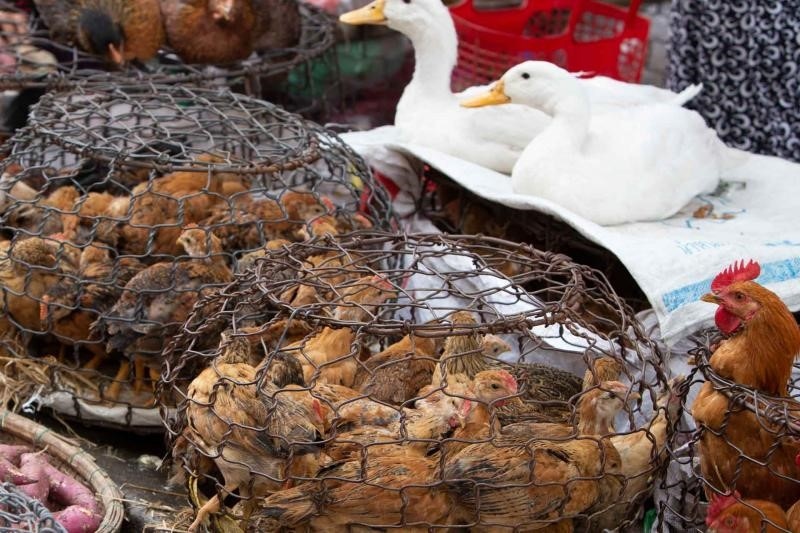Structure of live poultry trading networks in Vietnam influences transmission of avian influenza viruses; research could better inform vaccination strategies.
August 30, 2019

Scientists at The Pirbright Institute in the U.K. have found that the transmission of avian influenza viruses in Vietnam is influenced by the structure of live poultry trading networks.
According to the announcement, the researchers have identified the groups that are most likely to employ trade practices that affect the risk of infection in chickens, and the research could better inform vaccination strategies in poultry populations.
Published in Transboundary & Emerging Diseases, Pirbright researchers worked with partners in Vietnam at the National Centre for Veterinary Diagnostics and the Oxford University Clinical Research Unit to demonstrate that the vendor position in the trading network affected their odds of having avian influenza-infected birds.
Chickens that retailers bought from middlemen had an increased chance of being infected compared to those that were bought directly from large farms, the institute said. Odds of infection were also higher for retailers that had a greater number of ducks unsold per day.
Middlemen suppliers could provide a risk factor for influenza virus infection due to their tendency to travel among live bird markets and mix poultry stocks, Pirbright said. Likewise, retailers could be associated with higher odds of infection because they may purchase birds that have "changed hands" multiple times, increasing the time birds spent within the trade network and facilitating the mixing of birds from different sources.
The study also established that viruses from the same market were genetically more similar than those from other markets or provinces and identified two strains of influenza (H5N6 and H9N2) circulating in the markets that were sampled, the announcement said.
The co-circulation of influenza strains at live bird markets presents more opportunities for strains to infect the same bird simultaneously and swap genetic material, which could result in an influenza strain that is capable of infecting people, Pirbright explained.
“Live bird markets could allow highly pathogenic avian influenza H5 strains, which cause severe disease in poultry, to mix with strains that we have shown to have the genetic potential to infect humans, such as H9N2,” said professor Munir Iqbal, leader of the Avian Influenza Group at Pirbright. “Given this, it is important for us to establish factors in these markets that increase the likelihood of strains mixing, and our study has allowed us to identify high risk groups that are more likely to perpetuate the spread of avian influenza.”
This understanding of the dynamics and practices of live bird markets in Vietnam could aid vaccination strategies during outbreaks, the institute said. H5 strains are already vaccinated against as part of outbreak response measures and discretionary use of routine H5 vaccines is used in some commercial farms, Pirbright noted.
However, high-risk groups identified in this study could also be targeted, particularly farms that are highly connected to trade networks where high‐risk traders operate, Pirbright said. This could help in preventing the co-circulation of influenza strains and lower the risk of mutations occurring that could enhance virulence and transmission of viruses to humans.
Source: The Pirbright Institute, which is solely responsible for the information provided and is wholly owned by the source. Informa Business Media and all its subsidiaries are not responsible for any of the content contained in this information asset.
You May Also Like


.png?width=300&auto=webp&quality=80&disable=upscale)
